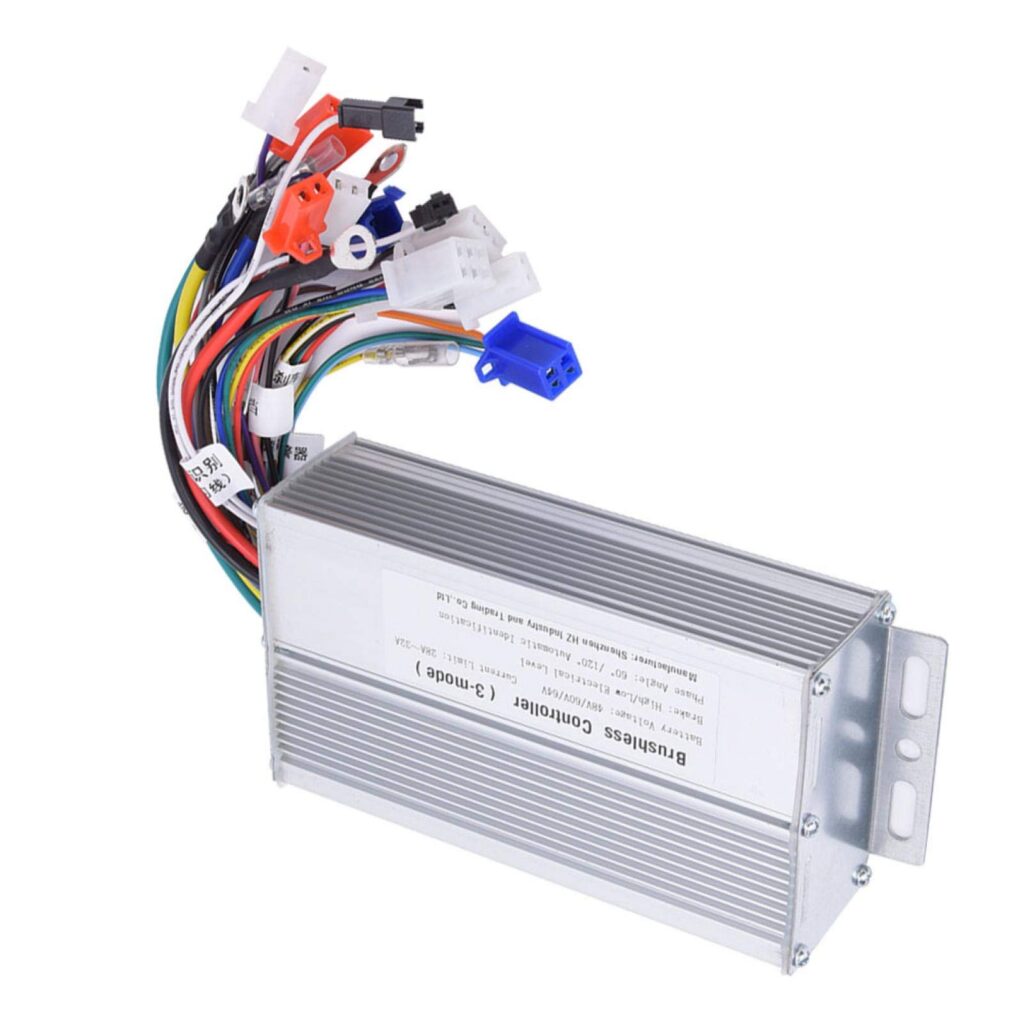As the name suggests “controller” is a component, which controls all the function that goes on an electric two-wheeler, it is like a brain of an electric two-wheeler that regulate the entire function and sent the correct message to the motor, battery, and other parts to run the vehicle smoothly.
An important point to note here is In recent years we observed the adoption of electric two-wheeler is significantly increased, due to the benefits offered by electric two-wheelers such as, it is an economical mode of transportation for long-term use.

Moreover, E2W requires minimal maintenance costs, and most importantly, being eco-friendly, it does not produce any carbon compared to a gasoline-driven two-wheeler.
Likewise, It scores over all the parameters. The electric two-wheeler is a sustainable mode of transportation.
What is Controller
In this post, you will find the detail of the controller functions and their importance.
In the propulsion process (vehicle moving forward) of an electric two-wheeler the controller is like a bridge between the battery and motor.
A controller is an electronic device that synchronizes all the system to work smoothly with safety, it is a centralized control panel that regulates and controls the speed of the motor as receive input from the throttle, and create the maximum output to ride smoothly to this innovative electric two-wheeler the silent machine.

Role of Controller
The controller performs the following roles as described below…
Power Regulation and Optimization
Controller’s primary function is to regulate and optimize the flow of power from the battery to the motor. By carefully managing electrical signals, the controller ensures that the motor receives the required voltage, current, and frequency for optimal performance.
Apart from this the controller monitors various functions, such as throttle input, battery voltage, and motor speed, and regulates it to make real-time adjustments.
Moreover, this precise power regulation prevents excessive energy drain, safeguards battery life, and maximizes motor efficiency. Through regulated power management.
The controller also enables electric two-wheelers to achieve acceleration and maintain a consistent speed.
Speed Control and Torque Management
More of it the controller is to drive the speed and torque output of the electric two-wheeler. By interpreting the rider’s inputs from the throttle, the controller translates them into required electrical signals.
These signals dictate the power output delivered by the motor, thereby controlling the vehicle’s speed.
Additionally, the controller manages torque distribution, especially in electric two-wheelers equipped with multiple motors.
By optimizes the power allocation to each motor, ensuring balanced torque delivery and enhancing traction and stability.
Interestingly This feature proves particularly useful in scenarios such as cornering, where the controller intelligently adjusts the torque distribution to maintain optimal control.
If the controller not functioning properly, it may hamper the performance of your electric two-wheeler, For example, if the controller is not providing enough power to the motor, you will experience poor acceleration
Regenerative Braking
Very interestingly unlike conventional Gasoline two-wheelers, electric two-wheelers have a remarkable feature known as regenerative braking. The controller plays an important role in harnessing this technology.
When the rider applies the brakes, Eventually the controller detects the deceleration and switches the motor into generator mode.
As a result of this mode, the motor converts the kinetic energy of the vehicle into electrical energy, which is then fed back into the battery.
The controller regulates this unique regenerative braking process, controlling the amount of energy to be captured and stored.
By efficiently managing regenerative braking, the controller not only enhances, the range of the electric two-wheeler, but also reduces wear on traditional braking systems, leading to longer service life and improved safety.
Safety Features and System Protection
Ensuring rider safety and preserving the longevity of the electric two-wheeler are of utmost importance, and the controller plays a very crucial role in these aspects. It incorporates various safety features and system protections to prevent malfunctions and accidents.
Intelligently, the controller constantly monitors the temperature of the motor and battery, the controller prevents them from operating beyond safe limits. In the event of an abnormality or potential hazard, the controller activates safety measures, such as reducing power output or shutting down the system altogether.
Moreover, the controller interfaces with the vehicle’s display panel, providing crucial information to the rider, including battery status, speed, and error codes. This real-time feedback enhances the overall riding experience and enables riders to make informed decisions.
Conclusion
As the electric two-wheeler revolution gains momentum, understanding the functions of its components becomes increasingly important.
The controller plays an important role in regulating power, controlling speed and torque, managing regenerative braking, and ensuring safety, the controller plays a lead role in enhancing performance, extending battery life, and providing a superior riding experience.
If you are planning to buy an electric two-wheeler, make sure to choose a model with a high-quality controller.
We should not forget the hidden champion “the controller” that silently enables us to embrace a cleaner, greener future on two wheels.
